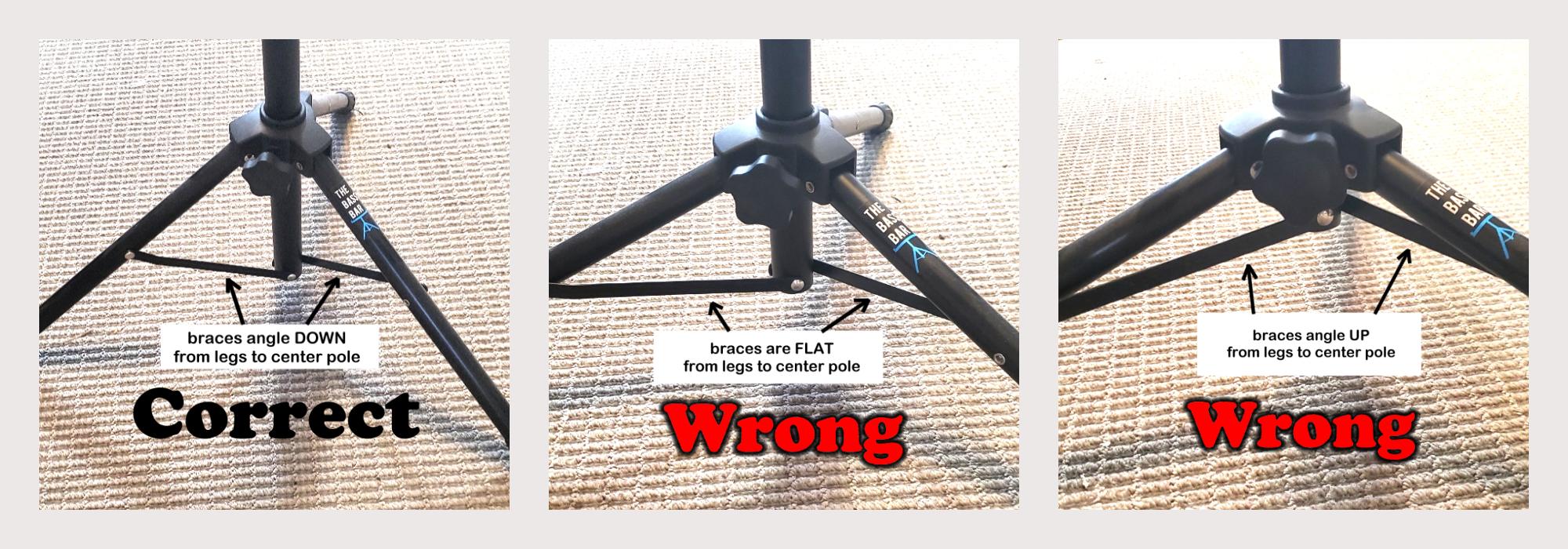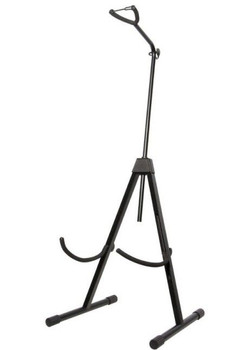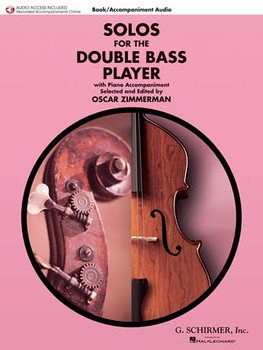The Bass Bar
The Bass Bar - Compact 'Laydown Style' Double Bass Stand
We ship worldwide! (Read this)
Description
Newly revised version is here!
The newest version of the Bass Bar is here. All of our stock is the new updated model, featuring upgraded neoprene on the bar, new packaging, and a new "safety rivet" to prevent over extending the tripod legs (a suggestion from me that was implemented by the manufacturer!)
Laydown, or "cradle" type stands, are becoming more popular. "The Bass Bar" is a newer entry into this growing trend, and the designer/maker of this stand has got it figured out.
The Bass Bar uses a common leg design - a strong, braced tripod - and places a simple, effective crossbar across the top. Wide enough to easily accommodate any size bass, it's quite easy to lay the bass down securely between sets - no little "cup" to aim the endpin into, no "arms" to reposition, no adjustments to make during setup. Easy-peasy!
Made of a sturdy steel, with rubber feet and endcaps, the cradle portion features a durable neoprene pad where the bass contacts the stand, to protect against damage to your instrument. The design is very stable - it doesn't rock or slide around during use. And yet, of all the stands I've ever tried, it folds up into the most compact travel size of any upright bass stand that I'd trust my own bass with.
It even comes with its own zippered carry pouch, which has internal dividers to keep the two disassembled components from dinging each other up. Now that's a nice touch.
Weight
- Bar: 0.75 kg / 1.7 lbs
- Tripod: 1.09 kg / 2.4 lbs
- Total: 1.84 kg / 4 lbs
Dimensions Bar
- Length: 42.5cm / 16.75 in
- Depth: 3.2cm / 1.25 in
- Height: 11.3cm / 4.5 in
Tripod
- Length: 42.2cm / 16.75 in
- Width: 12.5cm / 5 in
Assembled height is between 45-50cm / between 17.75-19.75 in (approximate)
Note that despite having junction points that look like typical adjustable stands, the top bar of this stand is NOT adjustable for height. This means that, in use, the stand has a fixed height of around 20" or so. This results in a varied experience for the player, depending on how high you set your endpin.
If your endpin is set relatively short (this will be the case for most of us) then the endpin will likely not touch the ground when in the "laydown" position in the stand. So your bass edges will touch the floor and/or be supporting the weight. This is AS DESIGNED - it's very stable. And you can get rubber bumpers for your bass for just $1 (see details below) if you're concerned about cosmetic damage from laying the bass on its edge.
If your endpin is set longer (maybe you're really tall) then the bass will "triangulate" on the endpin and the two points where the inner bout is supported on the stand. This is ALSO fine, and you won't have to worry about edges of the bass rubbing on the floor.
To test before you order, set your endpin the way you set it to play, and then tilt the bass over until the heighest inner point of the bass C-Bout is about 20" up from the floor.
Special Offer
This may not bother you, but if it does, for just a small upcharge, we offer a set of our durable rubber side bumpers for half price, which you can apply to the contact point on the lower edge of your bass sides. These "stick on" bumpers will act as "feet" to protect the edges from any unwanted scratches or dinging. They'll also provide better "traction" on a slick floor, providing even more confidence that your bass ain't going anywhere.
If you add them and the Bass Bar to your cart, they will be discounted automatically.
You can check out the bumpers, which have long been popular for "laying the bass down," by searching for our Bass Edge Protectors
Another special offer from Gollihur Music!
IMPORTANT NOTE ABOUT USING YOUR BASS BAR STAND
Your new stand is very stable without needing to extend the legs out to their maximum width; in fact, it’s not designed to have the width of the legs at their widest possible stance. Doing so can put extra strain on the rivets that hold the bracing bars in and cause them to fail (and the stand to possibly collapse).
The width of the legs in the first photo ("Correct") is very stable, and will hold your bass quite securely. The inner bracer bars should angle DOWN from the legs to the center pole; this enhances stability and strength and reduces “wobble.” Having the legs too wide will CAUSE wobble, which can strain the joints where the moving parts meet.

DO NOT open the legs as wide as the second photo (braces are “flat”), and DEFINITELY not as wide as the third (braces are angled UPWARDS).
You will break your stand.
Note: The newest version of the Bass Bar (released in 2024) has a special rivet in the post to prevent you from opening the legs too far.
12 Reviews
-
Great stand for the gigging bass player
I wanted something that was easy to transport, and would safely hold my bass on stage during breaks. I got tired of lugging around a full-size stand. The bass bar folds up and fits into my bag of "stuff" that goes with me, and is very stable. I also use it at home while practicing and need to take a quick break. Highly recommended.
-
Really great onstage
I really like this stand... it does take up a little bit of room when the bass is laying on it compared to my old upright stand, but it is so stable and it's really easy to carry to gigs because it even comes in its own little bag. Five stars!

















